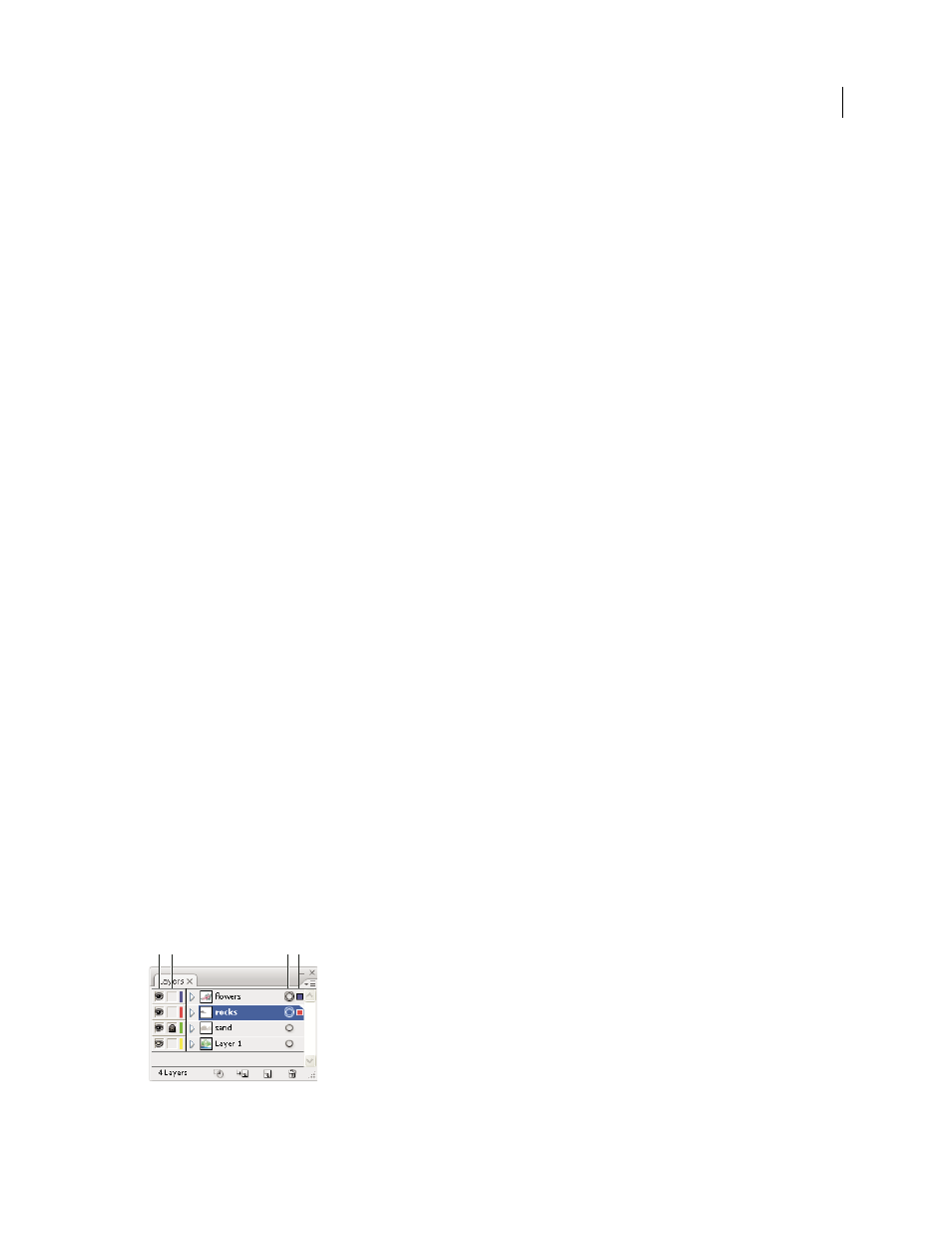Using layers, About layers, Layers panel overview – Adobe Illustrator CS4 User Manual
Page 222

215
USING ADOBE ILLUSTRATOR CS4
Selecting and arranging objects
5
Do one of the following:
•
To reflect the object, click
OK.
•
To reflect a copy of the object, click Copy.
Using layers
About layers
When creating complex artwork, it’s a challenge to keep track of all the items in your document window. Small items
get hidden under larger items, and selecting artwork becomes difficult. Layers provide a way to manage all the items
that make up your artwork. Think of layers as clear folders that contain artwork. If you reshuffle the folders, you
change the stacking order of the items in your artwork. You can move items between folders and create subfolders
within folders.
The structure of layers in your document can be as simple or complex as you want it to be. By default, all items are
organized in a single, parent layer. However, you can create new layers and move items into them, or move elements
from one layer to another at any time. The Layers panel provides an easy way to select, hide, lock, and change the
appearance attributes of artwork. You can even create template layers, which you can use to trace artwork, and
exchange layers with Photoshop.
. For information on using layers to create
animations, see
See also
Layers panel overview
You use the Layers panel (Window
> Layers) to list, organize, and edit the objects in a document. By default, every new
document contains one layer, and each object you create is listed under that layer. However, you can create new layers
and rearrange items to best suit your needs.
By default, Illustrator assigns a unique color (up to nine colors) to each layer in the Layers panel. The color displays
next to the layer name in the panel. The same color displays in the illustration window in the bounding box, path,
anchor points, and center point of a selected object. You can use this color to quickly locate an object’s corresponding
layer in the Layers panel, and you can change the layer color to suit your needs.
When an item in the Layers panel contains other items, a triangle appears to the left of the item’s name. Click the
triangle to show or hide the contents. If no triangle appears, the item contains no additional items.
Layers panel
A. Visibility column B. Edit column C. Target column D. Selection column
A B
C D